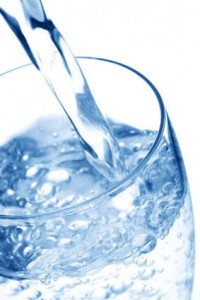A number of back-pain sufferers I work with tell me they’re in way too much pain to take the steps needed for long-term relief.
While they’re looking forward to solving their back pain problem once and for all, they can barely move right now.
Let me now address the topic of short-term pain relief.
Sometimes it’s necessary–so long as it doesn’t become an excuse to avoid a long-term solution.
 For most people, short-term pain relief involves taking some type of anti-inflammatory medication–Advil and Motrin being the most popular over-the-counter versions.
For most people, short-term pain relief involves taking some type of anti-inflammatory medication–Advil and Motrin being the most popular over-the-counter versions.
These medications were originally designed to be used only once in a while, but many people now rely on them on a daily basis.
Considering the dangers–heavy use increases the probability of stomach ulcers and intestinal bleeding and also places enormous stress on the liver and kidneys–I tell people to avoid them because there are much safer and effective alternatives.
Personally, I haven’t taken an over-the-counter or prescription pain reliever in nearly a decade!
Pain is a sign that something is wrong in the body, so the first task is to find out exactly what the problem is and to set about fixing it.
To handle the pain in the meantime, there are numerous things you can do.
Read more about these at length by clicking the links below:
Stress Reduction

As soon as you experience pain, you’ll probably also experience some level of stress.
That stress could be caused by fear or worry–What’s wrong with me?
Sometimes receiving a diagnosis and knowing what’s wrong creates even more stress.
Regardless of the reason, any stress can manifest itself physically, causing muscle tension and tightness that only serves to exaggerate pain.
Becoming informed about your condition, its causes, and ways you can treat it will help to reduce or alleviate your fears and worries, thus reducing stress.
Ultimately, the cycle of pain causing stress and stress causing more pain will stop, and as a result, you’ll be able to notice relief in the level of pain you’re experiencing.
Get Out of Bed

After surgery, patients are now encouraged to get out of bed, usually the same day or within 24 hours.
It’s proven that getting out of bed and returning to some level of activity as quickly as possible promotes faster healing.
This is also true for back pain sufferers. Limit the amount of time spent lying down by getting up as consistently and continuously as possible.
It might be for short durations at first, but you should notice that you’re steadily able to increase the amount of time spent on your feet.
This is a good activity which promotes healing, reduces pain, keeps your muscles active, and enhances a positive attitude.
Breathing Techniques
It can be beneficial to perform relaxation exercises.
Slow, deep breathing is one such exercise that is very calming and puts the body and the mind in a state of deep relaxation.
In this state, the muscles loosen and tension decreases, which lessens any pain you’re experiencing. Another plus: it clears the mind, which naturally reduces stress.
Alice Burmeister, author of The Touch of Healing, offers thousands of different breathing techniques in her book.
Breathing is a calming exercise that benefits the body in multiple ways, one of which is distributing oxygen throughout the blood.
Oxygen can help reduce pain.
Incorporate a breathing technique that works for you into your short-term pain management program.
Breathe deeply, consciously and intentionally, inhaling and exhaling fully as you focus on each breath. Do this as often as you can every day, for several minutes or an hour.
You’ll notice that this type of breathing brings immediate relaxation, which also helps to alleviate tension, stress, and pain.
Sound Nutrition
There are foods that are healthy and foods that are unhealthy.
Of course, it makes sense to eat as healthy as possible, but it’s also very important to understand the role nutrition plays in our overall health.
It’s also true that some foods provide more than sustenance and nutrition–for example, fish oils can help reduce pain and inflammation. Look for foods that are fresh and natural and those that are high in vitamins and minerals.
Steer away from foods with high fat or sugar content, those with empty calories, and processed foods that include a lot of additives, as well as any food that has little or no nutritional value.
Drinking water is also a must.
 Go for the eight glasses a day rule, or you can determine how much water your body needs by this formula: One-half an ounce for every pound of body weight.
Go for the eight glasses a day rule, or you can determine how much water your body needs by this formula: One-half an ounce for every pound of body weight.
So, a person who weighs 100 pounds should drink 50 ounces of water a day. .
This will help flush toxins from the muscles and body and regenerate the fluids in your muscles, discs and joints.
To ensure you’re getting the proper nutrition, take supplements or multi-vitamins on a daily basis.
Some of these supplements, like systemic enzymes, can reduce pain and inflammation.
Supporting Devices
There are many support devices for back and neck pain.
These can range from contoured pillows, mattresses, massaging seats or chairs, braces, etc.
If a supporting device helps you in any way, consider using it. It might be something as simple as putting an extra pillow under your knees at night to redistribute your body weight when you’re sleeping.
By reducing the pain at any level, a device can lower any irritation in your day or night, which will help you rest and heal.
Ice and Heat
During the first 48 to 72 hours, ice should be applied to minimize inflammation.
After that period, heat can be applied. Massaging the afflicted area with ice is a good way to use massage therapy in conjunction with ice, and it produces even more effective results.
When applying heat, you can use a heating pad or a hot pack, or the far infrared heat therapy previously discussed. Hot showers are another good way to apply heat to aches and pains.
Think about how good it feels to stand under a hot shower, letting the water soothe and loosen your achy muscles.
It helps circulate the blood and brings temporary pain relief.
Healing Arts
The healing arts would be inclusive to massage, acupuncture, Qigong, Aromatherapy, Bowen Therapy, Cranio-Sacral Therapy and other energy healing techniques.
You probably won’t expect one of these techniques to provide total healing and ease all of your pain, but in conjunction with other techniques and pain relief methods, they can help get you to the next level in your healing process.
Set Specific Pain Relief Goals
It’s vital that you have the mindset that you can and will improve.
Therefore, setting daily, weekly, monthly, and even yearly health-related goals are also recommended. Goals give you something to work toward and reinforce the attitude that progress is being made.
In addition, as you achieve each goal, you’re reminded that what you’re doing is working, that you’re improving and feeling better than you did yesterday, last month, or last year.
Goals work because they confirm precisely what you want to accomplish.
To make your goal achievable, make it specific and realistic. For example, if you’re suffering from extreme back pain right now, you probably wouldn’t set a goal to run a marathon next weekend.
In that instance, a more realistic goal might be to walk for 15 minutes by next weekend.
Also, make sure you set a date to accomplish your goal. It’s been said that a goal without a date is simply a wish.
When you set a date, however, you will be more likely to work toward achieving your goal a step at a time. The progress you make will fuel you to continue each day, bringing you closer and closer to making your goal a reality.
Exercise
Exercise is as important when you’re hurt or in pain as it is when you’re healthy and pain free. Exercising can be as basic as walking, which will help get your blood flowing, keep your muscles flexible and strong, and get your heart circulating. Start small if you must, and make a goal to increase the length of your walk as you are able.
Water exercises are also excellent choices for those suffering back pain. Swimming, water aerobics, or water walking are all great because water decompresses the spine. When you’re under water, gravity is eliminated, thus providing you with less resistance and relief.
While exercise is so important to our overall health, as well as our healing process, it’s important not to overdo it. Choose exercises that build the muscles that are weak, and be careful not to further stretch muscles that are already weak. Use Muscle Balance Therapy to identify the muscles that you want to focus on and select exercises which target those muscles.


